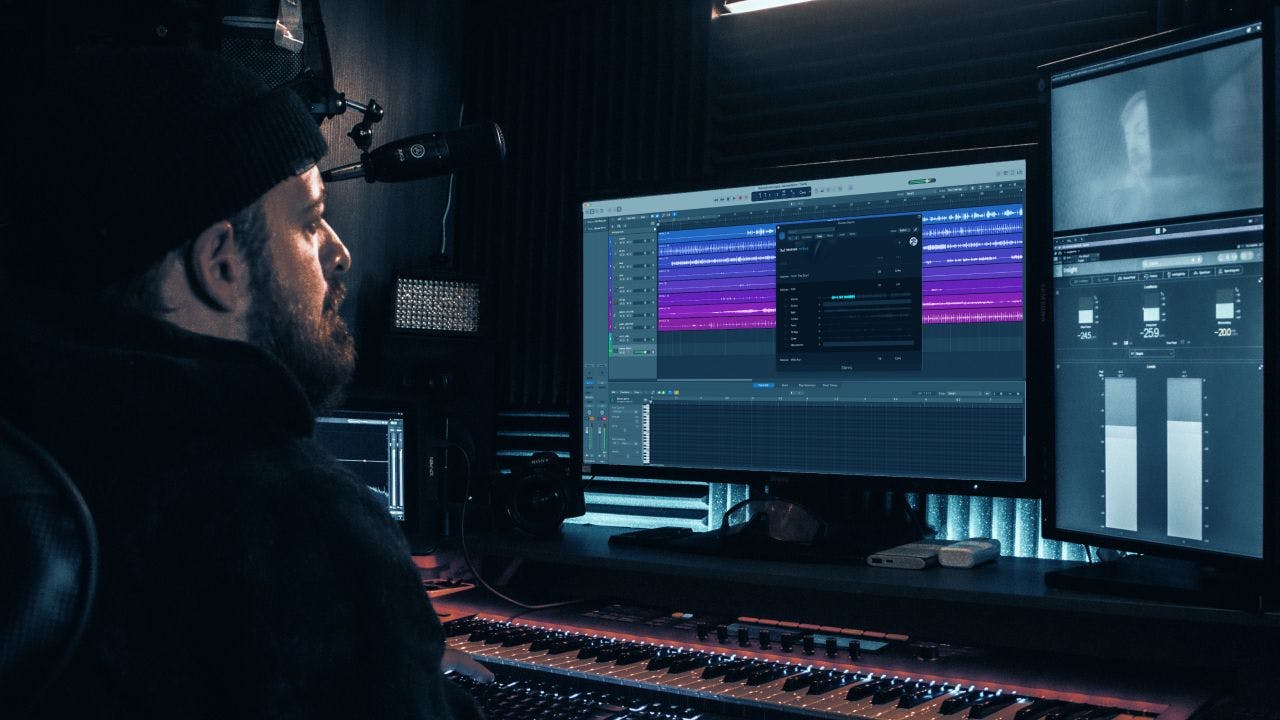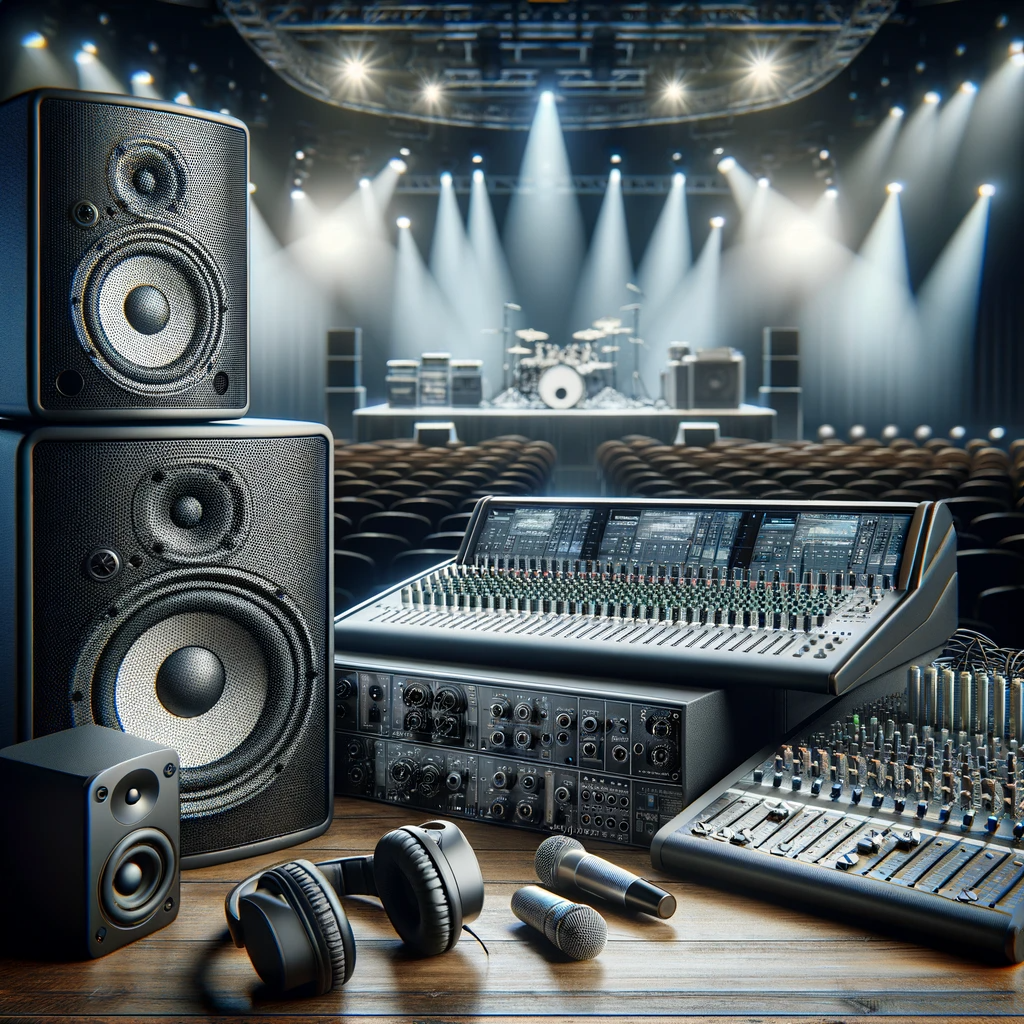Mixing and mastering are post-production processes that enhance audio quality in music production. When producing music, mixing involves adjusting individual tracks to create a balanced sound.
Mastering refines the mixed audio to achieve a polished, professional sound. Both processes are critical in creating high-quality recordings that sound great across different playback systems. Mixing involves adjusting levels, panning, and effects to ensure every element of the track fits together seamlessly.
Mastering focuses on overall tonal balance, stereo enhancement, and loudness optimization to make the music sound cohesive and engaging. By mastering, you can ensure your music is ready for distribution and will sound its best on various platforms.

Credit: moises.ai
The Difference Between Mixing And Mastering
Mixing and mastering are crucial stages in the music production process. Understanding the difference between the two is essential for achieving professional sound quality.
Key Distinctions
Mixing involves blending and balancing individual tracks to create a cohesive sound.
Mastering focuses on enhancing the overall audio quality through adjustments in clarity, consistency, and tonal balance.
Role Of Mixing
Mixing brings together various elements like vocals, instruments, and effects to create a harmonious audio mix.
- Adjusts levels, panning, and EQ settings
- Adds effects like reverb and compression
- Ensures all elements complement each other
Role Of Mastering
Mastering gives the final polish to the mixed tracks, optimizing them for distribution and playback.
- Enhances overall loudness and clarity
- Balances frequencies to achieve a cohesive sound
- Checks for consistency across tracks

Credit: www.amazon.com
Setting Up Your Workspace
When setting up your workspace for mixing and mastering, it’s crucial to create an environment that allows you to focus and work efficiently.
Choosing The Right Environment
Opt for a dedicated space with minimal distractions and adequate sound treatment to ensure accurate audio monitoring.
Essential Equipment And Software
Invest in quality studio monitors, headphones, audio interfaces, and digital audio workstations like Pro Tools or Ableton Live.
The Art Of Mixing
Mixing is an essential part of the music production process and is often referred to as the art of blending different audio elements to create a cohesive and balanced sound. It involves manipulating various elements such as volume levels, stereo placement, equalization, and effects to ensure that each instrument and vocal sits well within the mix.
Balancing Levels And Panning
When creating a mix, it’s important to balance the volume levels of each track to ensure that no element overwhelms the others. This can be achieved by adjusting the faders on the mixer to create a well-balanced sound where each instrument or vocal is audible but not overpowering.
Panning plays a vital role in creating a sense of space within the mix. By placing different elements in the stereo field, such as moving a guitar to the left and a keyboard to the right, a sense of depth and dimension can be achieved.
Equalization And Frequency Shaping
Equalization, or EQ, is used to adjust the frequency content of individual tracks to create a balanced and clear overall sound. By cutting or boosting specific frequencies, the tonal characteristics of each instrument can be enhanced, allowing them to sit well within the mix without clashing with other elements.
Effects And Automation
Adding effects such as reverb, delay, and compression can further enhance the sound of the mix, adding depth, movement, and character to the individual tracks. Automation allows for dynamic changes in parameters such as volume, panning, and effect levels over time, adding a level of expressiveness and polish to the final mix.
Mastering Techniques For Professional Sound
Learn professional sound mixing and mastering techniques in this comprehensive guide. Elevate your audio production skills and achieve top-quality results for your music or podcasts. Expert tips and tricks for creating a polished, professional sound.
When it comes to achieving a professional sound in your mixes, proper mastering techniques play a crucial role. Mastering is the final step in the audio production process, where the individual tracks are optimized and combined to create a cohesive and polished final product. In this blog post, we will explore two essential mastering techniques that can enhance the overall sound of your mix: Dynamic range and loudness, Stereo enhancement and harmonic excitement, and Finalizing the mix.
Dynamic Range And Loudness:
One of the key elements to consider when mastering your mix is the dynamic range and loudness. Dynamic range refers to the difference between the quietest and loudest parts of a track, and it plays a significant role in creating a balanced and impactful sound. It is essential to strike the right balance between preserving the dynamics of the mix and ensuring a consistent loudness level across the entire track. By using compression, EQ, and limiting techniques, you can control the dynamic range and achieve optimal loudness levels. These techniques allow you to enhance the clarity and presence of individual elements while maintaining a professional sound throughout the mix.
Stereo Enhancement And Harmonic Excitement:
Another technique that can elevate the quality of your mix is stereo enhancement and harmonic excitement. Stereo enhancement involves widening the stereo image of the mix, creating a sense of depth and immersion for the listener. This can be achieved using techniques such as stereo widening, panning, and utilizing stereo imaging plugins. Harmonic excitement, on the other hand, involves adding subtle harmonics to individual tracks or the entire mix, which can bring vitality and warmth to the sound. Utilizing saturation, harmonic exciters, or tape emulation plugins can help in achieving this desired effect. By incorporating these techniques, you can create a wide and captivating soundstage that enhances the overall listening experience.
Finalizing The Mix:
Once you have optimized the dynamic range, loudness, and stereo image of your mix, it’s time to finalize it for distribution. This involves ensuring that the mix translates well across different playback systems and formats. You can achieve this by checking the mix’s mono compatibility and making any necessary adjustments. Additionally, it’s important to address any technical issues such as clicks, pops, or background noise that may have been overlooked during the production phase. By thoroughly reviewing and fine-tuning your mix, you can guarantee a professional sound that captivates the audience and stands out in a competitive music industry.
Understanding Audio Formats And Delivery
When it comes to mixing and mastering audio, understanding audio formats and delivery is a crucial part of the process. The way your audio files are formatted and delivered can have a significant impact on the quality and compatibility of the final product. In this section, we will explore two important aspects of audio formats and delivery: file types and compression, and optimizing for different platforms.
File Types And Compression
Choosing the right file type and compression method is essential for maintaining audio quality and ensuring compatibility across different devices and platforms. Here are some commonly used file types:
| File Type | Extension | Advantages |
|---|---|---|
| WAV | .wav | – High-quality, uncompressed audio. |
| MP3 | .mp3 | – Small file size, widely supported. |
| FLAC | .flac | – Lossless compression, retains audio quality. |
Compression, on the other hand, allows you to reduce the file size of your audio while maintaining an acceptable level of quality. There are various compression methods available, such as:
- Lossless compression: Reduces file size without sacrificing quality
- Lossy compression: Sacrifices some audio information to achieve higher compression ratios
It is essential to strike a balance between file size and audio quality based on your specific requirements and the platforms you intend to deliver your audio.
Optimizing For Different Platforms
When delivering audio content, optimizing it for different platforms is crucial to ensure a seamless experience for your listeners. Here are some key considerations:
- Streaming platforms: Most streaming platforms have their preferred audio formats and specifications. Understanding these requirements and encoding your audio accordingly can enhance playback quality and compatibility.
- Mobile devices: Mobile devices have varying processing power and storage capacities. Compressing your audio files appropriately can reduce buffering issues and provide a better user experience.
- Radio and television: Broadcast media often has specific audio delivery requirements. Researching these requirements and adhering to broadcasting standards is crucial to ensure that your audio sounds its best on the airwaves.
By optimizing your audio files for different platforms, you can reach a wider audience and provide them with a seamless listening experience, regardless of the device or platform they choose.

Credit: geminisound.com
Frequently Asked Questions For Mixing And Mastering
What Is The Difference Between Mixing And Mastering?
Mixing is the process of blending individual tracks together to create a balanced and cohesive sound, while mastering is the final step that ensures the overall clarity, loudness, and consistency of the entire mix.
Why Is Mixing And Mastering Important In Music Production?
Mixing and mastering are important because they enhance the quality and impact of the music. Mixing helps to balance the various elements of a song and make it translate well on different playback systems, while mastering adds depth, polish, and loudness to the final product.
Can I Mix And Master My Own Music?
Yes, you can mix and master your own music if you have the necessary skills and the right tools. However, it is recommended to work with a professional engineer who has the experience and expertise to bring out the best in your music.
How Long Does It Take To Mix And Master A Song?
The time it takes to mix and master a song can vary depending on several factors such as the complexity of the music, the number of tracks, and the level of detail required. On average, it can take anywhere from a few hours to several days to complete the process.
Conclusion
To sum up, mastering and mixing is crucial for achieving a professional sound. These techniques can enhance the clarity, depth, and overall quality of your music. By understanding the fundamentals and applying the right tools and strategies, you can take your audio production to the next level.
Continuously improving your skills in this area will ensure that your music stands out in the competitive industry.